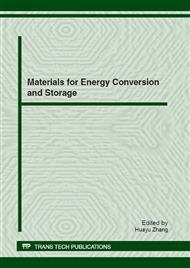p.252
p.256
p.261
p.265
p.269
p.273
p.277
p.281
p.287
Flexure Strength and Elastic Modulus of Four Types of Dental Fiber Posts
Abstract:
Objective. To investigate the flexure strengths and elastic modulus of four types of dental fiber posts. Methods. The flexure strengths of ParaPost Taper Lux, Tenax Fiber White, Luxa Post and Rebilda Post fiber post were measured. The rupture modes were analyzed with SEM. Results. There was no significant difference between ParaPost Taper Lux (591.47±35.15MPa) and Rebilda Post (614.67±58.36MPa) in flexure strength (P>0.05), and Tenax Fiber White (846.62±71.15MPa) had significantly higher flexure strength than the other groups. There was no significant difference between Tenax Fiber White (23.93±2.14GPa) and Luxa Post (22.67±1.39GPa) in elastic modulus (P>0.05), and Tenax Fiber White and Luxa Post had significantly lower elastic modulus than other groups. It could be observed by transverse SEM that the combine of fiber and resin was even and compact and plenty of resin fragment adhered to the surface of fiber in Tenax Fiber White group, multitudinous cracks were observed by lengthwise SEM. Conclusion. The flexural properties and rupture modes of four kinds of dental fiber posts were significantly different.
Info:
Periodical:
Pages:
269-272
Citation:
Online since:
July 2012
Authors:
Keywords:
Price:
Сopyright:
© 2012 Trans Tech Publications Ltd. All Rights Reserved
Share:
Citation:


